 Anatolia, and with it the whole of Asia Minor
Anatolia, and with it the whole of Asia Minor
is lopsided, very.

Mt. Ararat stands prominently at 5,165m on the
eastern border with Iran and only a few winding and
steep, trecherous roads precipitate  into that part of Asia.
into that part of Asia.
Amazingly, though, they were part of the Silk Road
into Anatolia and they continue in the opposite
direction literally right down the middle of Anatolia
to Istanbul.


And, two rivers emanate,

 from half way down
from half way down
its slow decent, directly to the south of
Mt. Ararat, into the great plain of Mesopotamia,
which is really Syria and Iraq, the cradle of
civilization  and where the two rivers will meet.
and where the two rivers will meet.


何故、この記述が必要かというと、あくまでも
ロ-マ人の視点からアナトリア以西の歴史を
見てみたい、それは、文明が初めて大規模に
激しく衝突した時期だったからです。アナトリアは
その舞台でした。長い間。。。
まず、大枠を確定する、その特徴を理解して
おく、それが今後の旅行や滞在に欠かせないと
思っているのです!
それがコルレオ-ネ村に滞在する時の歴史的な
背景ブリ-フィングになるのですから!
The average altitude

 even at the centre of
even at the centre of
Central Anatolia is staggering 2 km !!!,

 that,
that,
running down from Mt. Aratat, westward
over a distance of 800 km, past Mt. Erciyas,
standing at 3,917m, which is located
to the south of Kayseri, the town
the Romans named after Julius Caeser. 
So, you can see that the whole of Asia Minor is,
not just simply lopsided, but that it is a
lopsided highland, twice as large in area as
Japan at that!


This story will soon unfold around that town,
nearly four thousand years since the days
of the iron people, the Hittites.

They had a spell in and disappeared as an entity
from history, not knowing that I would be there
one day right in the middle of their homeland, 
that after a lapse of four thausand years
I would be watching the same mountain
they called "the white mountain",
nor that I would be there, reflecting upon
the intervening sanguine history of the area,
that was to emerge in their long absence...
In the mean time the gradual decent still
continues west towards Istanbul with
a tell-tale example, down the descent
in terms of the Great Salt Lake, which is the
product of the sheer heat in the region,
with river waters being unable to reach
the Srtaight area as they were exhausted
as they were exhausted
through a massive evaporation process  on
on
their way down there.
In fact, there are no major rivers
making it successfully into the seas in the
whole of western half of Anatolia.
The Romans knew it, must have known it
and that explains what they did with the pagans
in this region.

This area was largely treated as
a single entity by the Romans, to
protect the Empire from invasion
from further affield, Parthia.


It was a buffer zone where the two
civilizations met seriously for the
first time in history, Asia and Europe.


That is exactly what makes Anatolia
such an interesting place to history freaks.
The poor Turks still do not know whether
they are Asians or Europeans!

The Romans, however, would have been
very much more interested in controlling the
areas south of Anatolia, Syria in particular.
In describing these I have been heavily
supported by satellite pictures
of the whole region.
Where would natural paths be for
waters and the movements of armies
and soldiers, and logistic supplies?
By looking at satellite imagery
I begin to see how the Romans might have
thought about the whole area.
People would have moved like streams
of water,  taking the least painful and perhaps
taking the least painful and perhaps
sometimes hazzardous, but logicaly sound routes,
with roads spontaneously being created along them,
water and food supplies sometimes guaranteed
along the routes. 



You will see in my narratives soon, why
I think that way, how roads might have
developped in these virtually inhabitable places.


 +
+ The "White Moutain" stood shining aloof in the far distance,
The "White Moutain" stood shining aloof in the far distance,
covered by snow from top to bottom,  but somehow appeared as if
but somehow appeared as if
inviting me to ski on his slopes in the not too distant future. It was very sunny and bright, and slightly warmer than a few days earlier
It was very sunny and bright, and slightly warmer than a few days earlier
when it had snowed
 . Blown in the wind
. Blown in the wind
I was treading  over snow-coated and half-perished pumpkins
over snow-coated and half-perished pumpkins .
. I was chasing them one by one
I was chasing them one by one

 ,
,
trying to destroy  them all
them all .
.
I looked up again for a puf, and the Mountain
and the Mountain
sprung back into view.



 With all spontaneity I saluted in silence,
With all spontaneity I saluted in silence, 
in my own humble way


, just in case I might...

 Was it my imagination then that the Mountain
Was it my imagination then that the Mountain
appeared to notice  my tiny presence there
my tiny presence there
and echoed with a nod of approval?

最新の画像[もっと見る]
-
 アンドロイド版 Google Map とアンドロイド版 Google Earth 徹底比較
9年前
アンドロイド版 Google Map とアンドロイド版 Google Earth 徹底比較
9年前
-
 アンドロイド版 Google Map とアンドロイド版 Google Earth 徹底比較
9年前
アンドロイド版 Google Map とアンドロイド版 Google Earth 徹底比較
9年前
-
 Canon Coolpix AW130 位置情報の操作(詳細-3 ログファイル)
9年前
Canon Coolpix AW130 位置情報の操作(詳細-3 ログファイル)
9年前
-
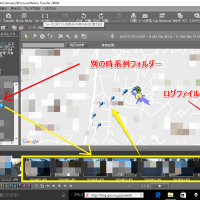 Canon Coolpix AW130 位置情報の操作(詳細-3 ログファイル)
9年前
Canon Coolpix AW130 位置情報の操作(詳細-3 ログファイル)
9年前
-
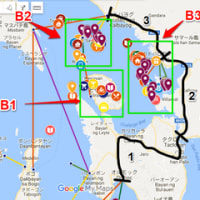 Fishing trips in the Philippines - Samar (3)
9年前
Fishing trips in the Philippines - Samar (3)
9年前
-
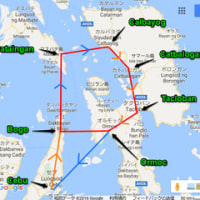 Fishing trips in the Philippines - Samar (1)
9年前
Fishing trips in the Philippines - Samar (1)
9年前
-
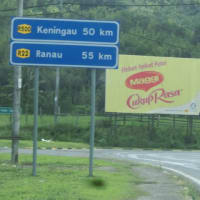 コタキナバル起点のボルネオドライブ情報-最新版
9年前
コタキナバル起点のボルネオドライブ情報-最新版
9年前
-
 コタキナバル起点のボルネオドライブ情報-最新版
9年前
コタキナバル起点のボルネオドライブ情報-最新版
9年前
-
 コタキナバル起点のボルネオドライブ情報-最新版
9年前
コタキナバル起点のボルネオドライブ情報-最新版
9年前
-
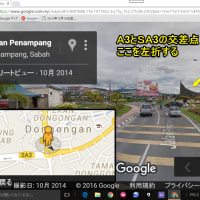 コタキナバル起点のボルネオドライブ情報-最新版
9年前
コタキナバル起点のボルネオドライブ情報-最新版
9年前










※コメント投稿者のブログIDはブログ作成者のみに通知されます